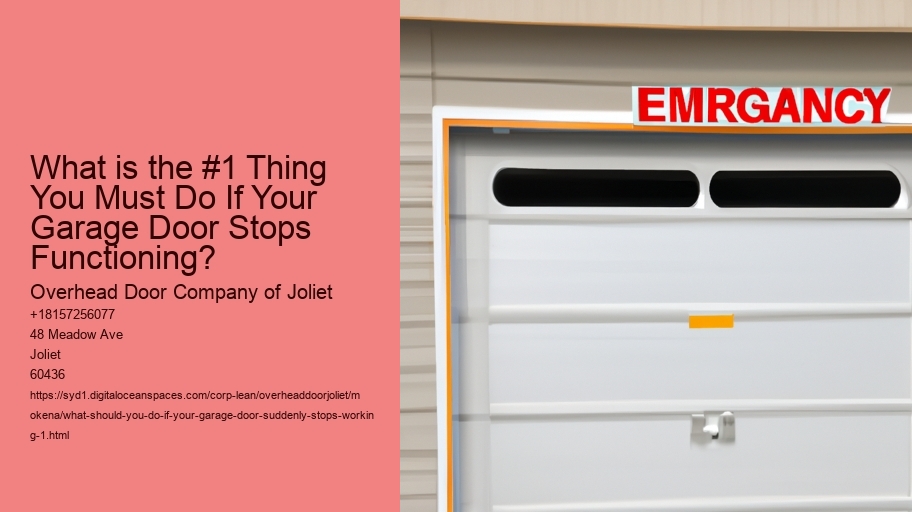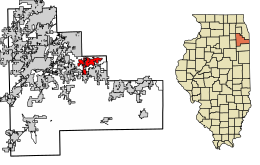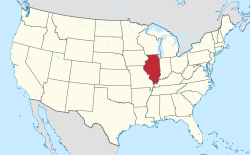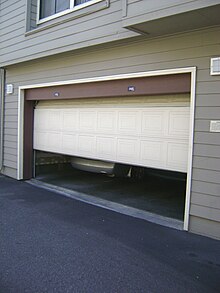What Kind of Garage Door Opener and Door Do You Have? .
If a garage door suddenly stops functioning, it's a frustrating and inconvenient experience.Whether you are rushing out to work or trying to get your car in the garage during a rainstorm, a malfunctioning door is the last thing you'd like to have to deal with.The first step to address this issue is to identify the type of garage door and opener you have, as this can dramatically affect your method of diagnosing and fixing.
Garage doors generally fall into a few categories according to their design and operation.The most common doors are roll-up, sectional as well as tilt-up doors.Sectional Doors are constructed of panels that are joined by hinges that allow the door to bend when it is closed and opened on a vertical track.Roll-up doors, which are typically found in commercial spaces made of the slats which roll into coils.
Tilt-up doors on the other hand they are a solid piece that tilts in and up when it opens.Belt-drive garage door openers are quieter however they utilize the rubber band instead of chain. They are a great option for garages that are attached. Screw-drive garage door openers make use of a rod made of steel to move the garage door. This is the best compromise between noise and price.
Once you've identified the garage door's type and the opener's model then the next step is to perform simple checks for common issues.Ensure that there is power to the opener by examining the plug as well as the breaker.Inspect the release cord for manual to be sure that it isn't pulled, which could disconnect the door from the opener.Examine the tracks of the door and rollers for any obstructions or damage and clear any debris.
Lubricate moving parts as needed in order to prevent lubrication issues. can lead to jamming or sticking.Resetting your opener can resolve any issues with electronics. Consult the manual of the model you have to learn the exact steps. Some openers can be reset by pressing the button, whereas others require to be disconnected from the unit and then plugged back in.
In some cases, the issue might be more complex for instance, a damaged spring or a damaged motor which will require expert assistance.Springs are subject to significant tension and are dangerous to repair without the appropriate tools and skills.
In conclusion, if your garage door suddenly stops working then the
Examine for debris or obstructions.
When the garage door abruptly ceases working, it's extremely frustrating and confusing particularly if it's element of your daily routine.
One of the first and most practical steps to take when faced with this situation is to check for any obstructions or debris.This simple but effective step can often be the key to identifying the issue and returning functionality to the garage door.A small obstacle could hinder your garage door from working properly.
Start by inspecting the tracks on both the left and right side of the door. Check for obvious obstructions, or debris buildup. If you spot anything strange, like the twig or rock stuck within the track. Get it removed with care.
Sometimes, the issue might not be apparent immediately, so it's advisable to run your hand along the track in order to feel for any unseen obstacles.Ensure that the tracks are aligned properly in addition, as in the event of a misalignment, it could cause the door to be jammed.The next step is to inspect the rollers and hinges.These components should move without resistance.If they're squeaky or stuck, it might be the result of accumulation of grime or rust.In the event of such a situation cleaning them and applying lubrication will often solve the issue.Use a soft cloth or brush to wash away any debris, then apply a suitable lubricant in order to make sure that the parts move smoothly.
Examine the area around the door. Sometimes, objects in the garage can drop or move, creating obstacles for the door. Check to ensure that there are no obstructions, and that there are no obstructions that might block the door.
If, after clearing any apparent obstructions, the door is still not working you should think about checking the sensors.
The sensors of modern garage doors may fail if they are dirty or not aligned properly.If you keep your path clear and clearing out obstructions, you'll avoid calling a professional to solve a problem that is often straightforward.
Verify the wall switch as well as the remote control
When the garage door stops working this could result in an unexpected issue that can disrupt your regular routine.In such situations there is a natural feeling of a sense of urgency to resolve the issue quickly.One of the initial and most efficient actions you can take is to inspect the remote control and wall switch.
These components are frequently the reason for a non-responsive garage door and checking them can save you time and potentially avoid costly expenses.First, consider the remote control.This handheld device is your primary tool for operating the garage door without direct physical interaction.Over time, remote controls can experience issues such as drained batteries, signal interference, or even internal damage.Start by replacing the batteries with new ones.It might seem simple, but dead batteries are a common reason for a garage door not responding.If the problem persists after replacing the batteries, try reprogramming the remote according to the manufacturer's instructions.Additionally, ensure that the remote is within the recommended range and that there are no obstructions blocking the signal.
Next, you should pay attention towards the wall switch. It is another important component of the garage door system.
The wall switch is linked to the garage door opener and generally provides a more reliable means for operation.Inspect the switch for signs of physical damage or wear.Sometimes loose wires or connections that aren't working properly can cause the switch to malfunction.If you feel confident doing so, carefully open the switch panel and check for any damaged or disconnected wires.If there are any issues there is a need to consult a professional electrician to safely address the problem.The wall switch or the remote control might be working correctly however the door still not working. This could be a sign of an issue with the garage opener's unit or with other components like sensors or door tracks.
You can eliminate these issues before you move on to more intricate troubleshooting.The initial check will help you save time and give you peace of mind that you've followed the correct steps to identify the issue.
Manually test the Door Balance
If your garage door suddenly stops functioning and then it stops working, it can be annoying and inconvenient.The garage door is an essential part of your home, providing security, shielding from the elements, and a simple access to your car and storage area.
What should you do if your garage door suddenly stops working? - technician
- suburb
- budget
- emergency service
Balance in a garage door is crucial to its optimal operation. A door that is not balanced can create more serious issues which include misalignment and broken springs.
Begin by disconnecting the garage door opener.
What should you do if your garage door suddenly stops working? - Great Lakes
- Florida
- technician
- Great Lakes
It is recommended that you contact an expert to assist you adjust the springs so that your garage door is balanced. This will not just resolve the issue, but also increase the longevity and durability of your system.
The manual testing of the door balance is an essential first step to take when your garage door suddenly stops working.
In addressing problems quickly and knowing the significance of addressing them, you can be sure that your garage door can operate without issue and in a safe manner in the future.Tracks and Rollers
This simple check will make it easier to save time and money when your garage door is not functioning.
Rollers and tracks are crucial elements of your garage door's operating system.The tracks are the metallic rails that guide the door as it opens and closes. The rollers are wheels of a smaller size that are able to move along these tracks.
What should you do if your garage door suddenly stops working? - Great Lakes
- door
- database
- AT&T U-verse
Begin by examining the tracks for obstructions.Dust dirt, grime, and even tiny pieces of debris can build up within the tracks, causing the rollers to struggle when they move through the path.Cleaning the tracks using a damp cloth is often enough to resolve these issues.Make sure that you dry them thoroughly afterward to stop rust from forming.
Next, examine the alignment of the tracks.Tracks should be aligned and parallel to each other.If they look bent or out of alignment, the door will jam.You can gently press the misaligned parts back into position using an rubber mallet.However should there is a significant amount of damage and extensive, you should contact a professional to re-align them in a safe way to ensure security and performance.
Rollers can become worn out as time passes. This is particularly true if they're made of plastic.
Metal rollers that have bearings last longer, and provide better performance.The use of silicone-based lubricants will decrease friction and wear. Make sure you lubricate the hinges and springs to ensure your garage door operates efficiently.
In conclusion, checking the tracks and rollers is an effective first step if your garage door suddenly stops working.It's an easy process that will often reveal and fix frequent issues.By ensuring these components are in good condition, aligned and well-lubricated you can often restore your garage door to its full function without the need for expensive repairs.
Inspecting and maintaining the parts can help to prevent future malfunctions. This will extend the lifespan of your garage system.Verify for visible damage, or wear
If garage doors stop functioning, it could be both inconvenient and frustrating especially if you're on your way out or trying to ensure your home is secure for evening.While there are a myriad of causes for the problem however, the most efficient and swift options is to examine the door for obvious damage or wear.This first inspection will usually determine the root of the issue, allowing an immediate and effective solution.
Garage doors are an intricate device made of multiple parts, like springs cables track, rollers, and tracks each one of which plays an important role in its seamless operation.Over time, these parts are prone to wear and tear from regular usage and exposure to the environmental factors.
It is easy to spot obvious flaws by performing a visual inspection.Begin by examining the springs. They are responsible for raising and lowering the door. Check for signs of wear and rust. A worn or damaged spring could make the door useless, so it's important to fix this issue as soon as possible. After that, examine the cables for fraying or broken strands.
The door is another place that requires attention. Examine for visible cracks, warpings, or bends.
Additionally, ensure that the door's sensors are clear and aligned, as misalignment or dirt may hinder their work and result in the door not functioning.Although a visual inspection may provide valuable insights, it is essential to remember that some issues might not be immediately apparent.If you don't see any obvious indications of wear or damage it might be necessary to speak with a professional technician to determine and solve the problem.However when you conduct an initial inspection, you'll be able to spot and resolve minor issues prior to them escalating into significant and costly repairs.
In conclusion, when you are confronted by a malfunctioning garage door, searching for signs of wear or damage is the most important first step.This approach is not just helpful in identifying the issue swiftly but also allows you to do the right thing to bring the door back to its original condition.
Being proactive and vigilant, you can ensure the longevity and security of the garage door.Verify for Springs and Cables
It can be frustrating when the garage door stops working. You should check the springs and cables. These are the essential components to the smooth operation of your garage and are the main culprits for a broken garage door.
The springs play an important role in the performance and the smoothness of your garage, by supporting the load. There are two major spring types, extension and torsion. Torsion springs are positioned above the garage and then twist in order to store energy. Extension springs however, are placed either side of door and are stretched to give the necessary force.
These springs may wear out over time, break or lose tension, causing operational issues.The same is true for cables as they work in tandem with springs to raise and lower the door.They typically consist of steel and designed to withstand significant tension.However they are susceptible to suffering due to wear and tear, fray or snap due to the pressure they're under.A damaged cable could result in the door becoming unbalanced or even completely inoperative.
If you're unsure if the cables or springs require to be adjusted or not, visually inspect them. Examine for signs of wear and rust.
Safety is the most important factor while dealing with garage door components.
Cables and springs are under extreme tension and could cause serious injury when mishandled.If you're not a pro at garage door repairs, you should to seek out a professional technician.They have the right tools and knowledge to replace or repair these parts to ensure your garage door operates properly and safely.In conclusion, when your garage door suddenly stops working, assessing the springs and cables is a key step in diagnosing the problem.Understanding their role and potential issues can help you determine whether a simple adjustment is needed or if professional intervention is required.Taking prompt action not only restores functionality but also ensures the safety and longevity of your garage door system.
It is recommended to call a professional Technician
If your garage door suddenly stops functioning the door can cause disruption to your day, and may even pose an security threat to your home.
While it might be tempting to pick up the tools and attempt a do-it-yourself fix, the most prudent method is to call a professional technician.This decision not only ensures your safety but also promises an efficient and lasting solution to the issue.Garage doors are complex systems composed of various components such as springs, cables, tracks, and electronic parts.Each of these elements plays a crucial role in the door's operation, and a malfunction in any part can cause the entire system to fail.Without proper knowledge and experience, attempting to fix these issues can be dangerous.For instance, garage door springs are under high tension and can cause severe injury if handled improperly.Professional technicians are trained to deal with these risks safely, using the right tools and techniques to handle repairs.
A technician who is a professional adds a degree of knowledge and experience which a layperson doesn't possess.
They can quickly diagnose the issue and identify whether it's a minor problem, like a misaligned track, or something more serious, like a broken spring.This expertise not only saves you time but also prevents the potential for further damage that can occur with incorrect handling.Professionals also have access to high-quality parts and can ensure that replacements match the specifications of your existing garage door system, leading to better functionality and longevity.Additionally employing a professional may be cheaper in the long run.While an DIY strategy may appear less costly initially, the chance of errors is very high, and could result in larger and more costly repairs in the future.A professional technician will get the job done correctly the first time to reduce the likelihood of having to deal with issues that arise repeatedly.
Many technicians also offer warranties on their work, giving you peace of mind knowing that if something goes wrong, you are covered.Engaging a professional in the process will reduce time and cost. It can be difficult to comprehend the mechanism behind garage doors, buy the correct tools and perform repairs can take many hours or even days. A technician will be able to fix the issue fast and enable you to go back to your regular routine.
In the end, even though the desire to fix your garage door yourself may be strong, contacting an expert technician is the safest effective, efficient, and ultimately the most sensible option.Their expertise, access to quality parts, as well as their ability to make quick and precise repairs will ensure that your garage door will be up and running again to protect your property as well as


















